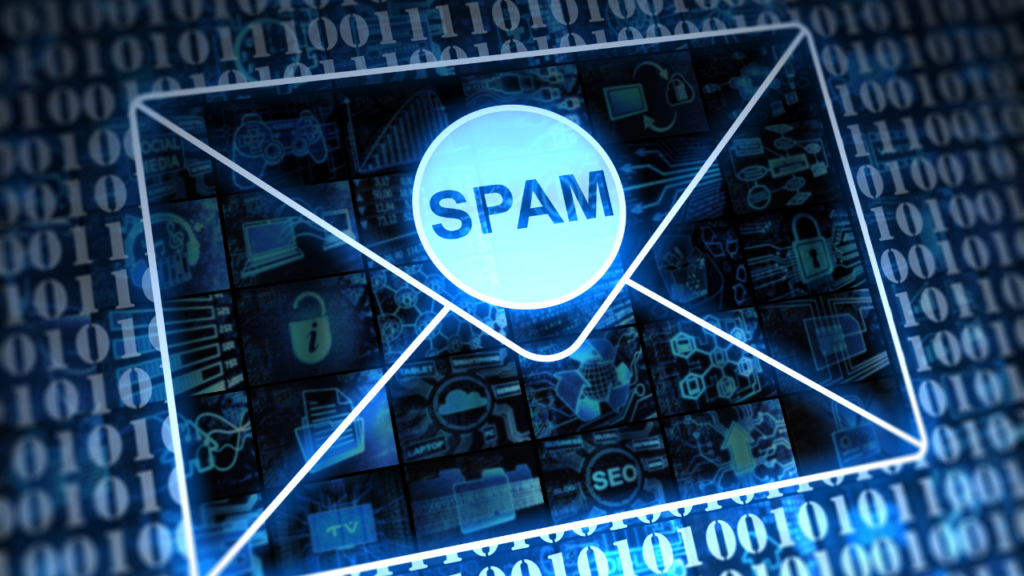Dental appointments are necessary for maintaining oral health, but missed appointments can lead to unfulfilled patient needs and lost revenue for your practice. By automating your follow-up reminders, you can significantly reduce no-shows and ensure that your patients remain engaged in their care. Automation not only saves you valuable time but also enhances your patients’ experience, as they receive timely notifications about their upcoming visits. In this post, we’ll explore effective strategies for implementing these reminders to optimize your practice’s operations and improve patient satisfaction.
Key Takeaways:
- Efficiency: Automating appointment reminders can significantly streamline communication, reducing administrative workload.
- Patient Engagement: Regular reminders enhance patient engagement and encourage attendance, leading to better treatment outcomes.
- Reduction of No-Shows: Effective follow-up systems minimize missed appointments, ultimately improving practice revenue and service availability.

The Importance of Appointment Reminders
To ensure the smooth running of your dental practice, effective appointment reminders are key to enhancing patient engagement and minimizing missed appointments. By utilizing Dental Appointment Reminder Software, you can automate follow-ups, leading to improved communication with your patients and ultimately boosting your practice’s efficiency.
Patient Attendance Rates
Appointment reminders significantly enhance patient attendance rates, as they serve as a timely nudge for your patients. By providing gentle reminders, you encourage your patients to prioritize their appointments, leading to more consistent attendance and better overall health outcomes.
Reducing No-Shows
Above all, reducing no-shows is one of the most impactful benefits of implementing appointment reminders in your practice. When patients receive reminders, they are more likely to show up for their scheduled visits, which ultimately helps you maintain a steady flow of patients and revenue.
And, ensuring that your patients are aware of their upcoming appointments can significantly enhance your practice’s efficiency. By minimizing the risk of cancellations and no-shows, you can allocate your resources more effectively and focus on providing quality care. Furthermore, automated reminders save you time and reduce the need for manual follow-ups, allowing your team to concentrate on improving patient experience. Ultimately, this not only strengthens the patient-practice relationship but also contributes to higher satisfaction and loyalty.
Types of Reminder Systems
Even though there are numerous ways to send out reminders, the most effective are:
- Text messaging
- Phone calls
- Postal mail
- Mobile app notifications
By utilizing an automated system tailored to your practice’s needs, you can streamline the process and enhance patient engagement. For more information, check out this Dental Appointment Reminder Software. Perceiving the differences in these systems can significantly improve your follow-up efficiency.
| Method | Description |
|---|---|
| Cost-effective and easy to implement. | |
| Text messaging | Quick and directly engages patients. |
| Phone calls | Personal touch but time-consuming. |
| Postal mail | Tangible but slower than digital methods. |
| Mobile app notifications | Engaging and highly effective for reminders. |
Traditional Methods
Across many dental practices, traditional methods for sending reminders such as phone calls and postal mail still hold value. While effective in connecting with patients on a personal level, these strategies often require significant time and labor. Relying solely on these methods can leave gaps in patient communication and engagement.
Modern Automated Solutions
Reminder systems have evolved, making room for modern automated solutions that simplify the task of sending out reminders. These systems can include automated texts, emails, and app notifications, ensuring that patients receive timely alerts about their appointments efficiently.
It is necessary to adopt modern automated solutions to fit today’s busy lifestyles. These systems not only improve patient compliance but also reduce missed appointments. By automating your reminders, you can save your staff time and energy, leading to a more productive practice. Additionally, employing such solutions allows you to customize messages and timing, making them relevant and impactful for your patients.

Benefits of Automating Follow-Ups
Many dental practices are realizing the advantages of automating follow-ups, as it not only streamlines operations but also fosters stronger patient relationships. By embracing automation, you can significantly reduce no-show rates, enhance communication, and ultimately improve overall patient satisfaction. These benefits allow you to focus more on providing quality care while your practice runs efficiently.
Time Efficiency
Below are some of the significant time-saving aspects of automating follow-ups. By automating appointment reminders and follow-up communications, you can free up your staff’s valuable time, allowing them to focus on direct patient care and other important tasks. This leads to a more organized schedule and reduces the chances of overwhelming your team with manual reminders.
Enhanced Patient Experience
With automated follow-ups, you ensure that your patients receive timely notifications about their appointments, improving their overall experience with your practice. This not only demonstrates your commitment to their care but also establishes a reliable communication channel. Having a dependable system in place makes it easier for your patients to manage their appointments and stay informed about their dental health.
For instance, when patients receive quick, automated reminders, they are less likely to forget their scheduled visits, leading to fewer missed appointments. This not only saves your practice time and resources but also helps maintain consistent care for patients. Furthermore, offering options for convenient follow-up communication—such as text messages or emails—creates an accessible platform for patients to reach out with questions or concerns. By enhancing your patient experience in this way, you build trust and loyalty, which are vital for maintaining long-term relationships with your clientele.
Integrating Automation into Your Practice
After implementing automation in your dental practice, you can significantly enhance your patient engagement and retention. By utilizing tools that provide systematic follow-ups and reminders, you can reduce missed appointments and improve overall satisfaction. For 10 Dental Appointment Reminder Text Examples, consider crafting personalized messages that resonate with your patients’ needs and schedules.
Selecting the Right Software
At the core of your automation strategy is the choice of software. Ensure that you select a solution that integrates seamlessly with your existing patient management system, offers user-friendly features, and provides customizable reminder templates to suit your practice’s unique needs.
Training Staff for Success
By equipping your team with the necessary training and resources, you can maximize the effectiveness of your automated appointment reminders. It’s important to guide staff on how to use the software efficiently and to recognize the value of these reminders in supporting patient relationships.
Practice fostering a culture of collaboration and openness among your staff to encourage feedback and improvements in how automation is implemented. Provide ongoing training sessions and support to ensure everyone is comfortable with the technology. This proactive approach can lead to a more cohesive workflow, enhance patient interactions, and ultimately improve your practice’s efficiency. When your team is well-trained and informed about the benefits of automation, you create a positive environment that enhances patient care.
Personalization in Reminder Messages
For successful dental appointment reminders, personalization plays a vital role in ensuring your patients feel valued and informed. By incorporating individual preferences and details into your messages, you can create a more engaging experience that resonates with each patient. This tailored approach can enhance their likelihood of responding positively to your reminders and increase attendance rates.
Tailoring Messages to Patient Preferences
Patient preferences can greatly influence the effectiveness of your reminder messages. When you gather insights about their communication styles, such as their chosen contact method or preferred time for notifications, you can customize your messages to suit their needs. This approach fosters a sense of connection and demonstrates that you care about their preferences, resulting in better patient satisfaction.
Boosting Engagement
Against a backdrop of generic reminders, personalized messages stand out and significantly boost engagement among your patients. You should carefully craft your reminders to include relevant details such as their name, upcoming appointment date, and personalized instructions. This attention to detail can lead to higher response rates, improved attendance, and greater patient satisfaction. Additionally, consider incorporating friendly reminders about their treatment history or special offers tailored to their needs. Creating a sense of familiarity can foster loyalty and encourage patients to prioritize their dental health.
Measuring the Effectiveness of Your Reminder System
Once again, assessing the success of your dental appointment reminder system is vital for optimizing patient engagement and reducing no-shows. By regularly evaluating the features of your reminders, such as timing and method of communication, you can ensure that your system is working efficiently. Collecting data on patient responses will enable you to identify areas for improvement and adapt your approach for maximum effectiveness.
Key Metrics to Consider
Measuring the effectiveness of your reminder system involves analyzing key metrics, such as appointment attendance rates, response times, and patient feedback. By tracking these indicators, you can gain insights into how well your reminders are resonating with patients, allowing you to make informed decisions on necessary adjustments.
Continuous Improvement Strategies
Among the best practices to enhance your reminder system is to implement continuous improvement strategies. Regularly reviewing your metrics and gathering feedback from patients can help you identify patterns and areas for enhancement. Don’t hesitate to A/B test different reminder formats and times to find the most effective combination that works for your patient demographic.
Effectiveness is paramount in keeping your practice running smoothly and ensuring patients attend their scheduled appointments. By prioritizing ongoing evaluations and adapting your strategies based on actual results, you can foster a proactive atmosphere that encourages patient participation. Additionally, enhancing your communication—whether through text, email, or phone calls—can lead to improved responses, streamline your workflow, and ultimately contribute positively to your practice’s growth.
To wrap up
Summing up, automating your dental appointment reminders can significantly enhance your practice’s efficiency and patient retention. By integrating a reliable reminder system, you free up your staff to focus on in-office care while also ensuring that your patients stay informed about their appointments. This technology not only improves communication but also reduces no-show rates, ultimately benefiting both your practice and your patients. Consider implementing automated reminders to streamline your follow-ups and foster a more organized and reliable scheduling experience.
FAQ
Q: What are dental appointment reminders and why are they important for my practice?
A: Dental appointment reminders are automated notifications sent to patients to inform them of their upcoming appointments. These reminders can be delivered via various channels such as text messages, emails, or phone calls. They help reduce no-show rates, allowing practices to maintain a more efficient schedule and maximize patient care. By implementing these reminders, practices can also improve patient satisfaction, as it shows a commitment to their care and helps them plan accordingly.
Q: How can I implement automated appointment reminders in my dental practice?
A: To implement automated appointment reminders, dental practices can choose from various software solutions that integrate with their existing practice management systems. Many practice management software platforms offer built-in reminder features that can be easily customized to fit the practice’s needs. It’s crucial to set up the reminder schedule, where notifications can be sent out days or hours before an appointment. Additionally, practices should continuously review the effectiveness of the reminder system and gather patient feedback to make adjustments as needed.
Q: What benefits does automation provide for appointment reminders in a dental practice?
A: Automating appointment reminders offers numerous benefits for dental practices. It frees up administrative staff from making manual calls, allowing them to focus on other crucial tasks that contribute to patient care. Automation ensures that reminders are sent out consistently and on time, reducing human error. Furthermore, it can lead to increased patient engagement since most people prefer receiving reminders in their preferred format, such as text messages. This can enhance communication between the practice and its patients, ultimately fostering better relationships and retention.




